 Description of the Leatherback
Description of the Leatherback
(Dermochelys coriacea)
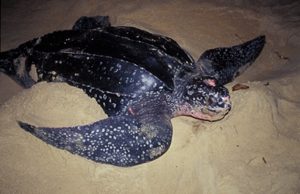 Dorsally predominantly black, with variable degrees of white or paler spotting; spots may be bluish or pink on neck and base of flippers; light pigment predominating on plastron.
Dorsally predominantly black, with variable degrees of white or paler spotting; spots may be bluish or pink on neck and base of flippers; light pigment predominating on plastron.
*source: Pritchard & Mortimier (1999)
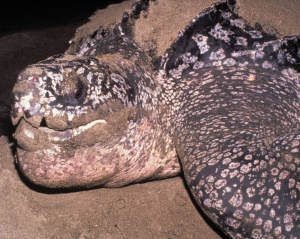
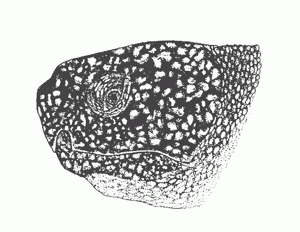 Shape broadly triangular; width to 25 cm; two prominent maxiallary cusps, covered with unscaled skin in adults.
Shape broadly triangular; width to 25 cm; two prominent maxiallary cusps, covered with unscaled skin in adults.
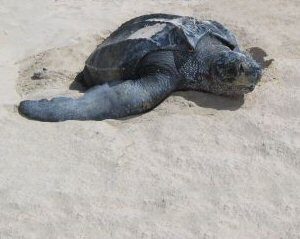
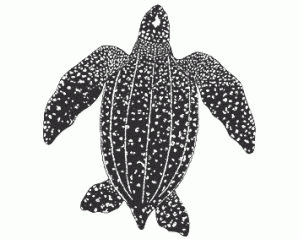 Elongate with seven prominent longitudinal ridges (keels); scutes always absent; adults with smooth skin, but hatchlings covered with small bead-like scales; straight carapace length to 180 cm (to 165 cm in the eastern Pacific).
Elongate with seven prominent longitudinal ridges (keels); scutes always absent; adults with smooth skin, but hatchlings covered with small bead-like scales; straight carapace length to 180 cm (to 165 cm in the eastern Pacific).
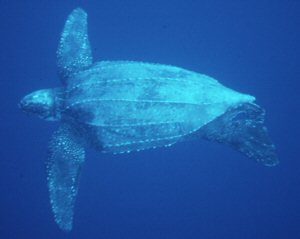
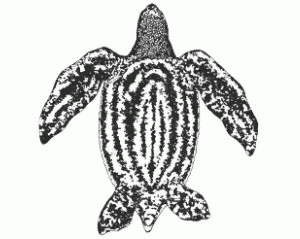 Black and white in color; relatively small, distensible (with very little bone).
Black and white in color; relatively small, distensible (with very little bone).